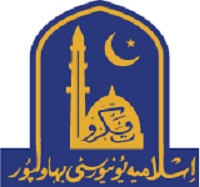The concept of benefiting from mortgaged items and its analysis
Abstract
Among the most basic human rights is the protection of wealth, life and honor, and in fact the Islamic Sharia is the only perfect code of life in which principles have been formulated to secure these three basic human rights according to natural requirements. Among these rights, wealth is the guarantor of the economic life of a person. But sometimes a person does not have wealth to fulfill his needs, so he has to get wealth from others in the form of loan. In such cases, Islamic Sharia has introduced the rules of borrowing and Qarz-e-Hasna (benevolent loan), which not only fulfill people's financial needs but also increase mutual love between them, as a result, an atmosphere of peace is established in the society. But due to the social effects, the tendency of people to give loans is decreasing, there may be many reasons, but one of the main reasons is the failure of the borrower to pay the loan، which causes financial loss to the lender. In this regard, Islamic Sharia has introduced the rules of mortgage here, so that if the debtor is unable to pay the loan within the stipulated time, the borrower can protect his money from the mortgaged thing. But, the issue extends further when the mortgagee desires to benefit from the mortgaged thing. The question arises whether this is permissible according to Sharia or not, and under what conditions the mortgagee can utilize the mortgaged thing. There are both agreed and differing opinions on this matter. This discussion investigates the permissibility or impermissibility of the mortgagee's utilization of the mortgaged thing based on scholarly research.
Downloads
Published
How to Cite
Issue
Section
License
Copyright (c) 2024 Dr. Abdul Rehman، Umme Aymen Abdul Razzaq

This work is licensed under a Creative Commons Attribution-NonCommercial 4.0 International License.
You are free to:
• Share: copy and redistribute the material in any medium or format.
• Adapt: remix, transform, and build upon the material.
• Attribution: You must give appropriate credit, provide a link to the license, and indicate if changes were made. You may do so in any reasonable manner, but not in any way that suggests the licensor endorses you or your use.
• NonCommercial: You may not use the material for commercial purposes.
• No additional restrictions: You may not apply legal terms or technological measures, that legally restrict others from doing anything the license permits








